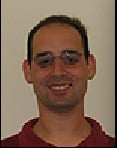Using an On-Line Animation Program to Help Children Express Stuttering
 |
About the presenter: Rhonda West, MS, CCC is a speech and language pathologist for Special School District in St. Louis. She currently works as a language coach in the Lindbergh elementary schools, developing literacy-based interventions for SLPs that compliment the district curriculum. For the last five years, she has volunteered with Friends and Family Day, a Stuttering Foundation sponsored event in the greater St. Louis area, for the past five years. |
 |
About the presenter: James Panico, Ph.D., CCC-SLP is an assistant professor of speech-language pathology at Southern Illinois University Edwardsville, where he teaches undergraduate and graduate courses on stuttering and supervises within the University clinic. He has presented at national and international conferences and has published articles in the area of stuttering perceptions. |
Using an On-line Animation Program to Help Children Express Stuttering
by Rhonda West and James Panico
from Missouri and Illinois, USA
Each year, the FRIENDS organization conducts a one-day workshop in the St. Louis metro area with support from the Stuttering Foundation of America known as Friends & Family Day. During Friends & Family Day, the goal is to try and create a day where children and adolescents who stutter can have a good time with each other while their parents, family members, and speech-language pathologists are off learning about stuttering. While the adults attend informational workshops and discussion groups, the children line up for fun events that range from scavenger hunts to bowling (although we arrange some opportunities for self-reflection and public speaking).
This year we wanted to do something a little different from previous years and so we went to Dvolver.com, which is a free website for making simple two-character animations. Our hope was that it would give the children a safe, creative outlet to talk about stuttering. We logged about 15 children onto Dvolver from a campus computer lab and asked them to write scripts either independently or with a partner. There were two rules: 1) the finished cartoons had to say something about stuttering, and 2) they shouldn't use words that would embarrass themselves or their family members when the animations were played back for all the workshop participants at the end of the day. Beyond that, we didn't attempt to control content. Although there were several young adults circulating to assist with the technology, our writer-animators, ages 5 to 15, negotiated the site with ease. (The helpers were reduced to spell checkers or typists)!
The activity lasted for about an hour. At the end of the activity, the group completed nine outstanding original cartoons that each had those nuggets of wisdom only children can deliver. That wisdom came from the mouths of aliens, superheroes, and animals who -- you guessed it -- stutter. The young animators premiered their works to the end-of-workshop audience of approximately 85 participants who laughed with recognition and beamed with pride when the end-of-toon credits rolled and revealed the creators' names. That warm reception, in turn, encouraged a few of our animators to pick up the microphone and address the crowd and share a few more personal observations, such as how much fun it was to meet and spend the day with other children.
Finding ways to get children to express thoughts about themselves and their speech in the limited 30 to 60 minutes we see them can be a struggle for clinicians. Using Dvolver proved to be a huge success as well as great tool for that clinical window of opportunity, and it also gave our creative group a real sense of accomplishment and some well-deserved recognition for talents they rarely have an opportunity to showcase. Our hope is that other clinicians find this to be as useful of a tool as we did when working with children who stutter.

